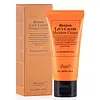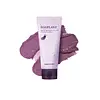What's inside
What's inside
 Key Ingredients
Key Ingredients

 Benefits
Benefits

 Concerns
Concerns

 Ingredients Side-by-side
Ingredients Side-by-side

Water
Skin ConditioningDipropylene Glycol
HumectantCaprylic/Capric Triglyceride
MaskingDaucus Carota Sativa Root Water
MaskingGlycerin
HumectantArachidyl Alcohol
EmollientEthylhexyl Palmitate
EmollientCetearyl Alcohol
Emollient1,2-Hexanediol
Skin ConditioningBehenyl Alcohol
EmollientPanthenol
Skin ConditioningButyrospermum Parkii Butter
Skin ConditioningArachidyl Glucoside
EmulsifyingSorbitan Olivate
EmulsifyingGlyceryl Caprylate
EmollientAmmonium Acryloyldimethyltaurate/Vp Copolymer
Helianthus Annuus Seed Oil
EmollientPropanediol
SolventPentylene Glycol
Skin ConditioningCanola Oil
EmollientSodium PCA
HumectantSodium Gluconate
Skin ConditioningGlycine Soja Oil
EmollientDipotassium Glycyrrhizate
HumectantButylene Glycol
HumectantGlucose
HumectantTocopheryl Acetate
AntioxidantAllantoin
Skin ConditioningHydrogenated Lecithin
EmulsifyingDaucus Carota Sativa Seed Oil
EmollientMelaleuca Alternifolia Leaf Oil
AntioxidantSantalum Album Oil
MaskingCamellia Japonica Flower Extract
EmollientDaucus Carota Sativa Root Extract
Skin ConditioningSodium Hyaluronate
HumectantBixa Orellana Seed Oil
EmollientPhytosteryl/Octyldodecyl Lauroyl Glutamate
Skin ConditioningBeta-Carotene
Skin ConditioningCeramide NP
Skin ConditioningTocopherol
AntioxidantWater, Dipropylene Glycol, Caprylic/Capric Triglyceride, Daucus Carota Sativa Root Water, Glycerin, Arachidyl Alcohol, Ethylhexyl Palmitate, Cetearyl Alcohol, 1,2-Hexanediol, Behenyl Alcohol, Panthenol, Butyrospermum Parkii Butter, Arachidyl Glucoside, Sorbitan Olivate, Glyceryl Caprylate, Ammonium Acryloyldimethyltaurate/Vp Copolymer, Helianthus Annuus Seed Oil, Propanediol, Pentylene Glycol, Canola Oil, Sodium PCA, Sodium Gluconate, Glycine Soja Oil, Dipotassium Glycyrrhizate, Butylene Glycol, Glucose, Tocopheryl Acetate, Allantoin, Hydrogenated Lecithin, Daucus Carota Sativa Seed Oil, Melaleuca Alternifolia Leaf Oil, Santalum Album Oil, Camellia Japonica Flower Extract, Daucus Carota Sativa Root Extract, Sodium Hyaluronate, Bixa Orellana Seed Oil, Phytosteryl/Octyldodecyl Lauroyl Glutamate, Beta-Carotene, Ceramide NP, Tocopherol
Solanum Melongena Fruit Extract 66%
Skin ConditioningKaolin 14%
AbrasivePropanediol
SolventDipropylene Glycol
HumectantIsononyl Isononanoate
Emollient1,2-Hexanediol
Skin ConditioningUltramarines
Arachidyl Alcohol
EmollientCetyl Alcohol
EmollientGlyceryl Stearate
EmollientStearyl Alcohol
EmollientBehenyl Alcohol
EmollientCI 77491
Cosmetic ColorantTitanium Dioxide
Cosmetic ColorantJuglans Regia Shell Powder
AbrasiveArachidyl Glucoside
EmulsifyingSalvia Hispanica Seed Extract
EmollientCentella Asiatica Extract
CleansingHouttuynia Cordata Extract
Skin ConditioningPotassium Cetyl Phosphate
EmulsifyingBentonite
AbsorbentBetula Alba Juice
AstringentWater
Skin ConditioningGlyceryl Stearate Se
EmulsifyingEthylhexylglycerin
Skin ConditioningXanthan Gum
EmulsifyingTocopheryl Acetate
AntioxidantButylene Glycol
HumectantDisodium EDTA
Allantoin
Skin ConditioningGlucose
HumectantCalendula Officinalis Flower Extract
MaskingHydroxycinnamic Acid
Skin ConditioningRutin
AntioxidantSolanum Melongena Fruit Extract 66%, Kaolin 14%, Propanediol, Dipropylene Glycol, Isononyl Isononanoate, 1,2-Hexanediol, Ultramarines, Arachidyl Alcohol, Cetyl Alcohol, Glyceryl Stearate, Stearyl Alcohol, Behenyl Alcohol, CI 77491, Titanium Dioxide, Juglans Regia Shell Powder, Arachidyl Glucoside, Salvia Hispanica Seed Extract, Centella Asiatica Extract, Houttuynia Cordata Extract, Potassium Cetyl Phosphate, Bentonite, Betula Alba Juice, Water, Glyceryl Stearate Se, Ethylhexylglycerin, Xanthan Gum, Tocopheryl Acetate, Butylene Glycol, Disodium EDTA, Allantoin, Glucose, Calendula Officinalis Flower Extract, Hydroxycinnamic Acid, Rutin
 Reviews
Reviews

Ingredients Explained
These ingredients are found in both products.
Ingredients higher up in an ingredient list are typically present in a larger amount.
1,2-Hexanediol is a synthetic liquid and another multi-functional powerhouse.
It is a:
- Humectant, drawing moisture into the skin
- Emollient, helping to soften skin
- Solvent, dispersing and stabilizing formulas
- Preservative booster, enhancing the antimicrobial activity of other preservatives
Allantoin is a soothing ingredient known for its protective and moisturizingg properties. Because of this, it is often added to products with strong active ingredients.
Studies show higher concentrations of this ingredient can promote wound healing.
Though it can be derived from the comfrey plant, allantoin is produced synthetically for cosmetic products to ensure purity.
Learn more about AllantoinArachidyl Alcohol is a fatty alcohol made from peanut oil. It is an emollient, emulsifier, and thickener.
You'll most likely find this ingredient as an emulsifier in water-based cosmetics.
We don't have a description for Arachidyl Glucoside yet.
Behenyl Alcohol is a type of fatty alcohol (these are different from the drying, solvent alcohols).
Fatty Alcohols have hydrating properties and are most often used as an emollient or to thicken a product. They are usually derived from natural fats and oils; behenyl alcohol is derived from the fats of vegetable oils.
Emollients help keep your skin soft and hydrated by creating a film that traps moisture in.
In 2000, Behenyl Alcohol was approved by the US as medicine to reduce the duration of cold sores.
Learn more about Behenyl AlcoholButylene Glycol (or BG) is used within cosmetic products for a few different reasons:
Overall, Butylene Glycol is a safe and well-rounded ingredient that works well with other ingredients.
Though this ingredient works well with most skin types, some people with sensitive skin may experience a reaction such as allergic rashes, closed comedones, or itchiness.
Learn more about Butylene GlycolDipropylene Glycol is a synthetically created humectant, stabilizer, and solvent.
This ingredient helps:
Dipropylene glycol is technically an alcohol, but it belongs to the glycol family (often considered part of the ‘good’ alcohols). This means it is hydrating and gentle on skin unlike drying solvent alcohols like denatured alcohol.
As a masking agent, Dipropylene Glycol can be used to cover the smell of other ingredients. However, it does not have a scent.
Studies show Dipropylene Glycol is considered safe to use in skincare.
Learn more about Dipropylene GlycolGlucose is a simple sugar and is the most important source of energy in all organisms.
In skincare, glucose is used to hydrate the skin. It also acts as a prebiotic for our natural biome.
Glucose is hydrating due to its humectant property. As a humectant, glucose draws moisture from the air and from deeper levels in the skin.
Our skin contains many sugars that act as prebiotics and help strengthen our natural microbiome. Having a healthy microbiome helps protect our skin from harmful bacteria and other contaminants.
Studies show glucose may help with fading discoloration and pigmentation. This is because our skin metabolizes glucose into lactic acid. Lactic acid is an AHA that helps exfoliate the top layer of skin.
Learn more about GlucosePropanediol is an all-star ingredient. It softens, hydrates, and smooths the skin.
It’s often used to:
Propanediol is not likely to cause sensitivity and considered safe to use. It is derived from corn or petroleum with a clear color and no scent.
Learn more about PropanediolTocopheryl Acetate is AKA Vitamin E. It is an antioxidant and protects your skin from free radicals. Free radicals damage the skin by breaking down collagen.
One study found using Tocopheryl Acetate with Vitamin C decreased the number of sunburned cells.
Tocopheryl Acetate is commonly found in both skincare and dietary supplements.
Learn more about Tocopheryl AcetateWater. It's the most common cosmetic ingredient of all. You'll usually see it at the top of ingredient lists, meaning that it makes up the largest part of the product.
So why is it so popular? Water most often acts as a solvent - this means that it helps dissolve other ingredients into the formulation.
You'll also recognize water as that liquid we all need to stay alive. If you see this, drink a glass of water. Stay hydrated!
Learn more about Water